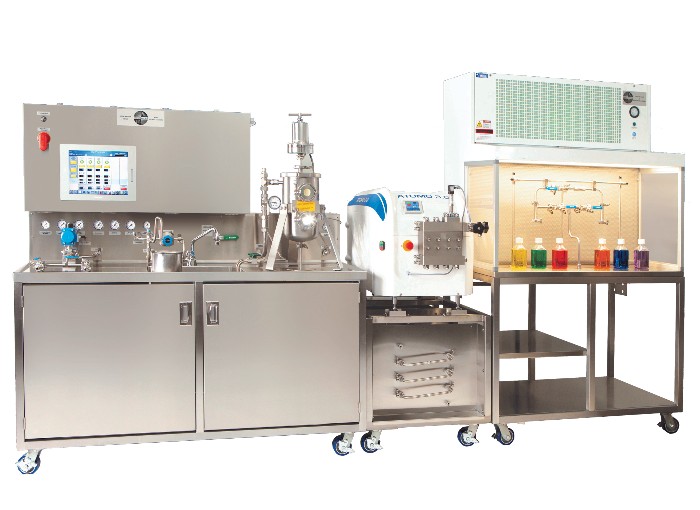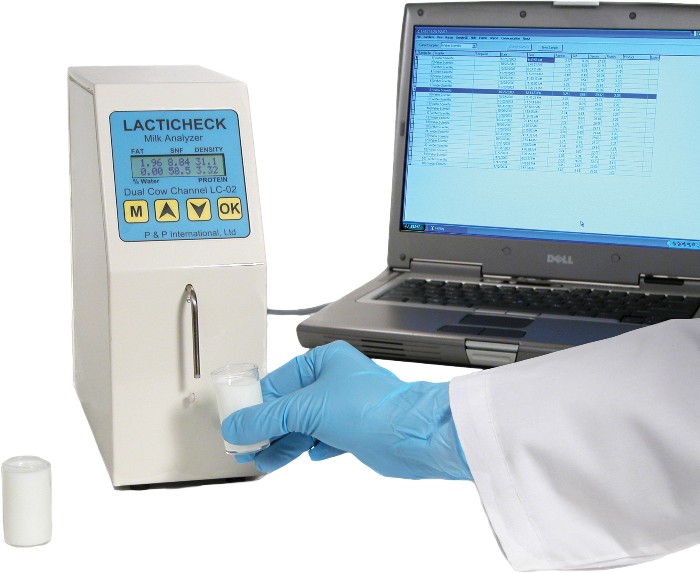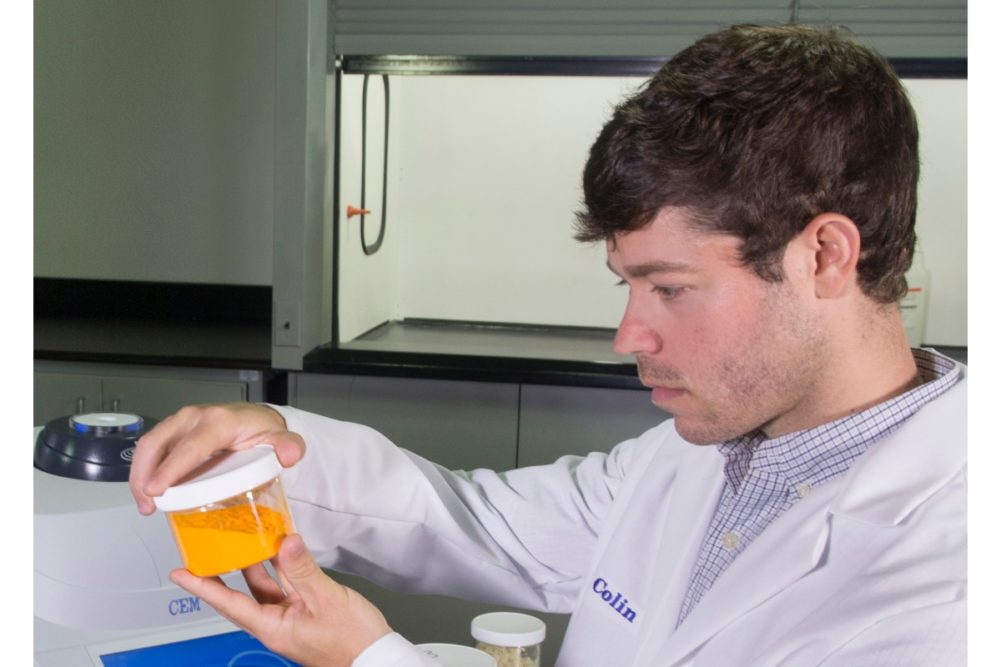Scrutinizing products and formulations for their efficacy and food safety is a given for dairy processors. Having the ability to test drinks, yogurts, creams and other products with on-site laboratory tests and equipment can help streamline an operation.
Processes change when different ingredients are added or subtracted to a product. David Miles is the executive vice president at MicroThermics, Inc., in Raleigh, NC, where the company builds lab equipment that simulates the production process. Miles said the industry has seen a years-long trend of more highly fortified products being manufactured, and those types of products often need more testing.
“As a general rule, the more highly formulated a product is, the more complications you can run into in processing,” he said.
As Miles put it, “Mother Nature has a really good formulation in milk – it’s pretty stable.” Processors, of course, know this, and as a result add everything from proteins, minerals and vitamins, to flavors, sugars, thickening agents, gums and suspending agents to their dairy products.
“They all have different reactions to heat,” Miles added, explaining why the more ingredients that are added that react to a thermal process, the more a manufacturer has to deal with or worry about.
Dairy companies are a huge part of MicroThermics’ market, Miles said, because it is critical for processors to be able to move out of the research and development stage, right into production quickly, so they can keep their production lines full.
He said having lab testing equipment in a facility speeds development, with the ability to qualify formulations and assist R&D teams so new products are tested and ready when they hit the production line.
Whether a company runs its own products, serves as a co-packer or is a cooperative, Miles said plant operators want to have a wide array of products running as many hours a day as possible, and they can’t afford to test new products on production lines.
“The trick is, you don’t want to create a product that you have to then create a processing plant for,” Miles said. “That’s a really expensive way. You want to be able to formulate products that can be processed on existing equipment, but not necessarily on just one existing processor.”
 Photo: MicroThermics
Photo: MicroThermics
The challenge for researchers, he added, is developing formulas that are robust enough that companies get the right product identity after it has been processed on not just one, but a number of different production lines.
When adding MicroThermics testing equipment to an existing facility, he said one of the most important factors is making sure staff is fully and properly trained, which is why the company provides it.
“It’s like driving a car,” he said, adding that it is not difficult to operate. “But if you don’t know how to do it, it doesn’t work.”
Equipment is designed to be accurate to the production process, and Miles said MicroThermics even has a fully automated series. That allows an operator to set up the equipment for a specific process and “push go,” setting off sequential automation and a sterilization cycle.
“And once it’s ready for product, it essentially alerts the operator and says, ‘Hey, you’re ready.’ And that takes a lot of burden off of the operators.”
Creating an accurate process in a lab setting, he said, can be an investment that speeds a company’s research and takes products from conception to manufacturing much more quickly.
Measuring, testing for safety
At Page & Pedersen International, Ltd., Hopkinton, Mass., the company’s creed is “you must measure to manage.” Jackie Page, the company’s president, explained that on-site testing is “essential” to processors.
“You simply can not wait hours – or days – for results,” Page said.
Establishing a reliable, effective lab testing space within a dairy processing facility, she added, allows companies to manufacture safe, quality products on a day-to-day basis.
A supplier to the global dairy industry at the small- to mid-sized level, Page & Pedersen designs and manufactures fit-for-purpose instruments. Page said monitoring the quality of incoming milk ensures a facility is beginning its process on a solid foundation.
“Testing for extraneous water and Somatic Cell Counts are quick tests that keep bad product out of your plant,” she gave as one example.
“Microbial testing at milk reception and in-process testing at critical points confirm good hygiene and proper processing,” Page added. “Random tests of finished product for alkaline phosphatase and microbial load before it leaves the plant stops sub-standard products before they leave the plant.”
 Photo: Page & Pedersen
Photo: Page & Pedersen
Even though all dairy products are highly regulated, Page pointed out, some require more scrutiny. She said those include value-added products such as milk chocolate and soft rind cheeses, as well as dairy alternatives that are labeled as “milk.”
“The consumer has high expectations of dairy products as safe, nutritious, healthy foods,” Page said. “In order to meet and exceed these hard-earned expectations, lab testing must be put in place throughout the dairy system to ensure good, safe, healthy products reach the consumer at all times.”
When a company adds lab testing equipment to its facility, Page said it is important to consider the areas in which lab results can have the biggest impact. She pointed to consistent quality, safety and optimal product taste and flavor.
Additionally, financial consideration and yield are paramount. Page recommended processors examine whether adding testing at critical points could confirm proper outcomes.
“For example, if you test the composition of your whey, will it allow you to make adjustments in the cutting or other points of your cheesemaking process to confirm you are getting good results every day? Are you implementing testing of finished products so that you can prove that finished products are safe when they go out your doors?”
Fast-tracking results
Access to rapid results on site also allows for quick formula changes to products as they are being manufactured, said Eileen Stochl, process product manager for CEM Corporation, Matthews, NC. The global company provides solutions for critical laboratory applications.
When processors can make necessary adjustments without slowing production, Stochl said, batches can be released more quickly and companies don’t have to waste time waiting for lab results from an outside source.
“Rapid and accurate feedback is critical for efficient manufacturing, resulting in savings to the bottom line,” she said.
With lab equipment inside a plant, processors have the ability to test every product that is made there. And Stochl said the benefits of doing just that include discovering savings through cost analysis and the quality of products being manufactured.
“Test incoming raw materials to maximize profitability, in-process goods to make rapid adjustments and finished products to deliver the best product to your customer,” she said.
While implementing a totally new lab testing space at a facility can present some inherent challenges, similar to any change or update within an operation, Stochl said common setup tasks can include establishing calibration curves, method validation and operator training.
“Concepts that need to be explored include how many samples will be tested, and therefore how many methods will need to be created and validated, to be able to test the entire product range,” she explained. “Any system that can reduce the number of testing methods required will lessen the burden of creation and verification. Methods that have been approved by regulating agencies, such as AOAC, ISO and others, typically require no calibration and validation only to ensure proper system operation.”
Stochl also said training is a critical step in creating a successful lab space, because the technicians carrying out the testing play a significant role.
“Any protocol or system that can reduce the amount of operator error, maintain consistency over multiple shifts and, potentially, multiple sites, will also lessen the challenges of implementation,” she said. “A reduction in the amount of maintenance, cleaning and/or sample prep time will also reduce the training burden to the new technicians.”
There are several components to keep in mind when adding lab testing to an existing facility, Stochl advised. Chief among them is how much a company currently spends on an outside lab.
“Another savings that is quickly recouped is the more efficient use of expensive ingredients by having accurate and immediate results that allow adjustments, again without having to wait for outside lab results,” she added.
Plus, just the equipment itself comes with a number of considerations, Stochl said, noting long-term maintenance costs and components that need to be replaced are at the top of the list. Additionally, any time that a system is down for maintenance or recalibration cuts into available testing time.
“Reliable systems that do not require frequent calibration will deliver both accurate and timely results,” she said.
How functional a system is for employees to use and the availability of support and service should not be overlooked either, Stochl pointed out.
She said the decision to bring testing on site is “a big one” and it typically comes with an upfront investment. Even so, she said the long-term payoff can be worthwhile.
“A system that delivers accurate results in a timely manner will facilitate good decisions on the production line,” Stochl said. “At the end of the day, better control results in savings to the bottom line.”

